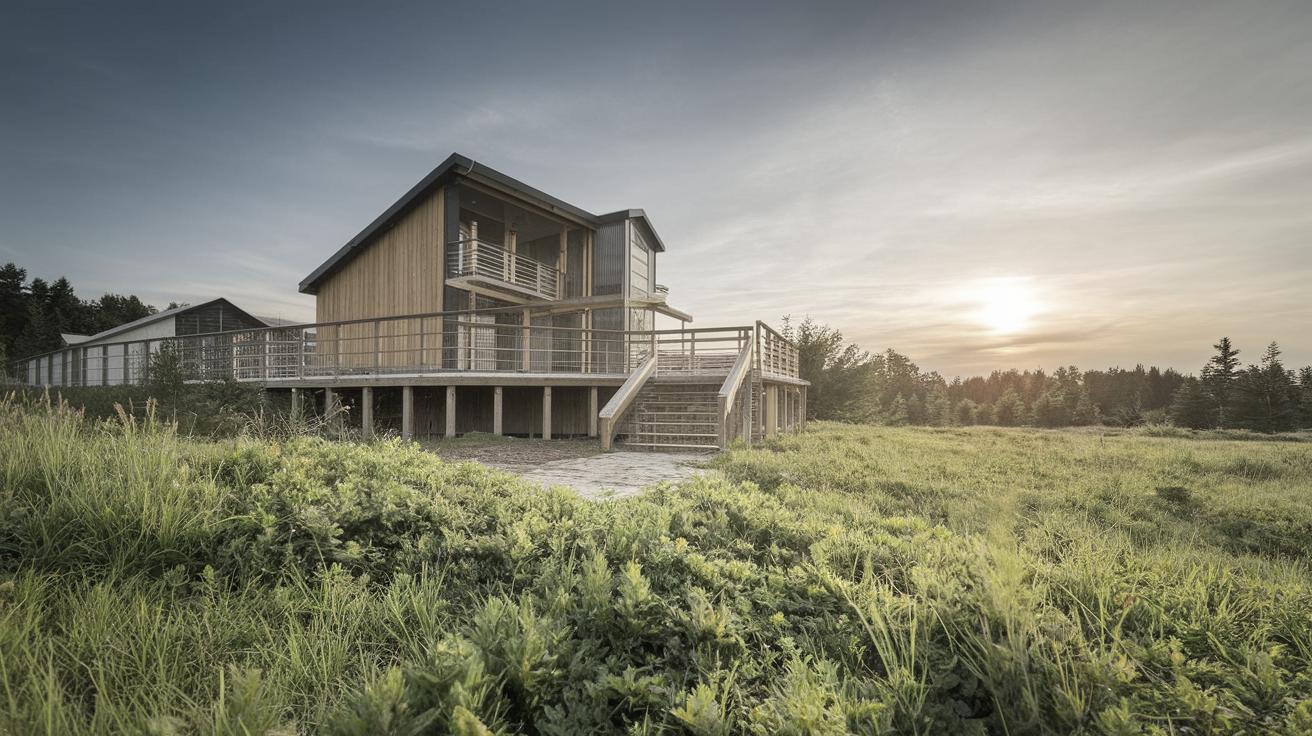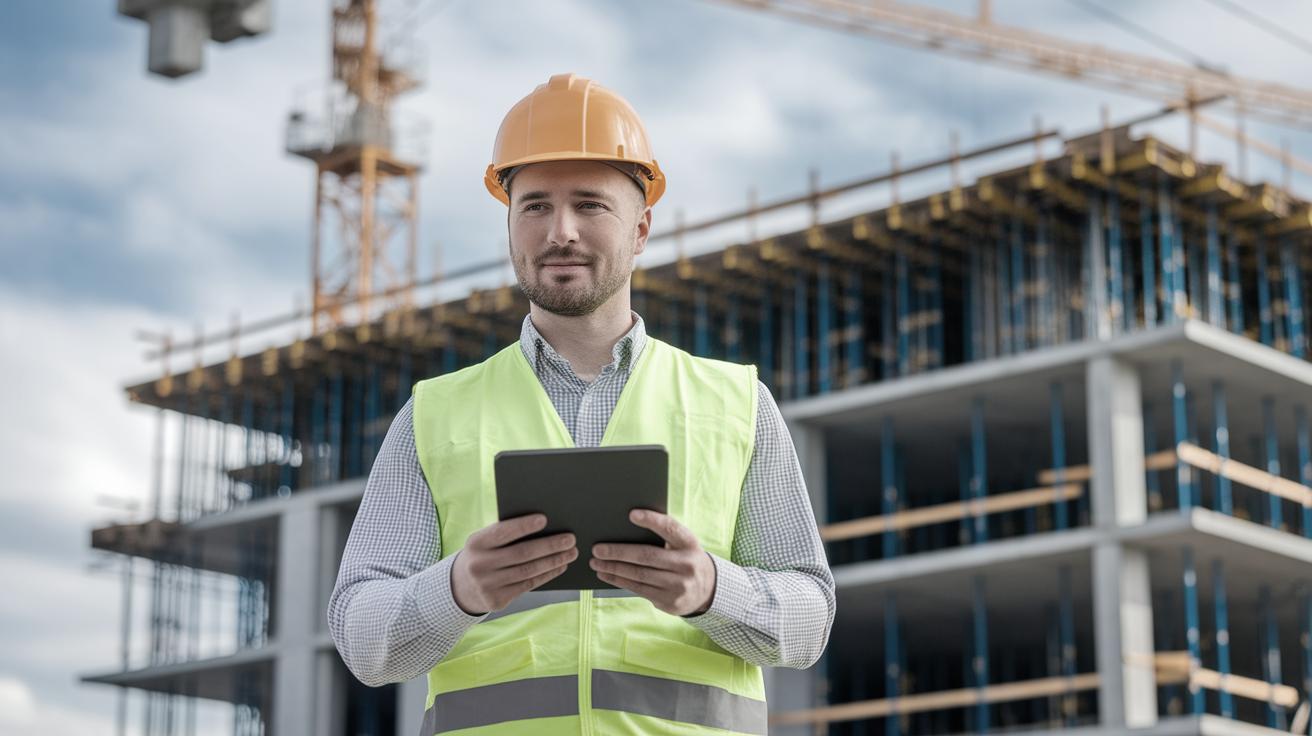Best Practices for Sustainable Construction
In the age of environmental consciousness, sustainable construction is not just a trend, but a necessity. Building for the future involves mindfully considering materials, energy efficiency, smart integration, and water management. As more companies strive to be eco-friendly, innovative methods and technologies emerge. From green building materials and renewable energy solutions to the smart use of IoT and a focus on water conservation, these practices set the stage for minimizing environmental impact. By exploring the efforts of industry leaders like Lafarge Canada, this article delves into the best practices that are shaping the sustainable construction landscape today.
Trend 1: Green Building Materials and Technologies
Environmentally Friendly Concrete
As a fundamental component of construction, concrete production traditionally generates significant CO2 emissions. However, environmentally friendly concrete options are gaining traction. These sustainable alternatives include the use of recycled aggregates and supplementary cementitious materials like fly ash and slag that enhance durability while reducing the carbon footprint.
Additionally, carbon capture technologies are being developed to trap emissions during production. These advancements in concrete technology support the reduction of greenhouse gases significantly. By utilizing sustainable concrete, buildings can maintain structural integrity and lower environmental impact.
Eco-Conscious Cement Production
Cement involves some of the highest emissions in the construction industry. Consequently, eco-conscious production methods are essential. The introduction of alternative fuels and raw materials, combined with efficient kiln technologies, are reducing emissions in cement manufacturing.
Companies are also exploring calcined clay, a sustainable alternative to clinker, which is a primary source of carbon emissions in cement production. These initiatives are pivotal in lowering the industrial carbon footprint and advancing construction sustainability.
Sustainable Asphalt Solutions
Beyond the typical construction materials, asphalt also sees innovations in sustainability. By incorporating recycled materials such as reclaimed asphalt pavement (RAP) and recycled asphalt shingles (RAS), new sustainable asphalt solutions drastically reduce waste.
Furthermore, warm mix asphalt technologies, which lower the production and laying temperature of asphalt, offer energy savings and reduce emissions. These solutions not only contribute to sustainable construction but also enhance road durability and longevity.
Trend 2: Energy Efficiency and Renewable Energy
Integration
Energy efficiency is a key aspect of sustainable construction. Integrating energy-efficient materials and systems begins at the design phase. High-performance doors and windows, superior insulation, and reflective roofing materials all contribute to reduced energy consumption.
These elements not only optimize energy use but also enhance the comfort and functionality of buildings. Smart design and material selection can lead to significant energy savings over a building’s lifecycle.
Harnessing Renewable Energy
Implementing renewable energy sources such as solar, wind, and geothermal technology is increasingly common in sustainable construction. Photovoltaic solar panels, for instance, convert sunlight into electricity and provide a clean energy solution for buildings.
These renewable energy systems reduce dependence on fossil fuels and decrease buildings’ carbon footprint. By harnessing these technologies, constructed environments can become more autonomous and eco-friendly.
Smart Energy Management
Smart energy management systems are a vital addition to modern energy-efficient buildings. These systems monitor and manage energy usage through real-time data and analytics, optimizing energy consumption and increasing cost savings.
Employing technologies such as smart thermostats, lighting control systems, and energy monitoring tools allows for precise control over energy use. The adoption of smart systems ensures that buildings operate efficiently and sustainably.
Green Building Certifications
Green building certifications such as LEED, BREEAM, and WELL provide a benchmark for energy-efficient construction. These certifications tend to focus on sustainable practices, indoor environmental quality, and resource efficiency, encouraging developers to adopt stringent energy-saving measures.
Projects holding such certifications demonstrate a commitment to reducing environmental impact and promoting sustainable development, appealing to environmentally conscious stakeholders.
Trend 3: Smart Building and IoT Integration
Advanced Building Automation Systems
The role of advanced building automation systems (BAS) in sustainable construction is significant. These systems integrate and automate heating, ventilation, air conditioning, lighting, and security systems in a coherent central management platform.
BAS not only enhance operational efficiency but also contribute to substantial energy savings. The automation facilitates ongoing optimization ensuring that building performance remains aligned with sustainability goals.
IoT for Enhanced Efficiency and Comfort
The Internet of Things (IoT) is revolutionizing modern building control systems. IoT devices collect valuable data from various building operations, which can be analyzed for performance improvements and optimizations.
By connecting devices and systems, IoT facilitates improved energy management, occupant comfort, and streamlined maintenance processes, all contributing to a more sustainable construction model.
The Role of Data Analytics in Building Management
Data analytics plays a vital role in enhancing building management by providing insights into resource utilization and performance monitoring. Through analytics, inefficiencies can be identified, operational strategies refined, and preventative maintenance scheduled.
Automated analysis tools can predict energy demand, improving energy efficiency and lowering costs. By leveraging data-driven decision-making, builders can maximize resource utilization and minimize environmental impact.
Trend 4: Water Conservation and Management
Innovative Water Conservation Technologies
Water scarcity challenges are being addressed by the implementation of innovative water conservation technologies. Systems such as rainwater harvesting and greywater recycling significantly reduce potable water consumption in buildings.
These technologies support sustainable water management by reusing and maximizing water resources, aligning with broader environmental conservation efforts.
Wastewater Management and Reuse
Extensive wastewater management systems are essential in sustainable construction. Treatment and reuse systems convert wastewater into useable water for irrigation, industrial processes, or replenishment of resources.
By closing the loop on water consumption, these systems mitigate water waste and promote a circular approach to water use in sustainable buildings.
Smart Water Management Systems
Smart water management systems integrate sensor technologies and analytics to optimize water usage and detect leaks or inefficiencies promptly. These systems provide building managers with real-time data, improving control over water consumption and reducing waste.
By utilizing smart technologies, buildings reduce water use and are better equipped to sustain environmentally friendly practices.
Compliance with Water-Related Building Codes
Adhering to water-related building codes and standards ensures that new construction projects are environmentally responsible. These regulations mandate water efficiency and encourage sustainable practices across all aspects of building design and operation.
By meeting and exceeding these codes, buildings underscore a commitment to sustainability and integrate best practices in resource conservation.
Trend 5: Emphasis on Indoor Environmental Quality
Enhancing Air Quality
Indoor air quality is a priority in sustainable construction. Adequate ventilation, eco-friendly materials, and air purification technologies contribute to healthier indoor environments and occupant well-being.
Eliminating volatile organic compounds (VOCs) and ensuring consistent air exchange rates fosters a safer and more comfortable atmosphere for building occupants.
Natural Light and Visual Comfort
Utilizing natural light in architectural design supports energy efficiency and enhances visual comfort. Technologies like light shelves and advanced glazing direct daylight within spaces, reducing the need for artificial lighting.
Harnessing natural light improves occupant productivity and satisfaction while lowering energy consumption, aligning with sustainable design principles.
Acoustic Comfort
Noise pollution is an overlooked element of indoor environmental quality. Acoustic comfort involves incorporating sound-absorbent materials and designing with noise reduction in mind, ensuring restful and productive environments.
Implementing solutions such as acoustic panels and strategic building layouts supports serene indoor spaces conducive to occupant well-being.
Thermal Comfort and Control
Achieving thermal comfort is crucial in sustainable construction, as it directly affects occupants’ well-being and productivity. Smart HVAC systems and high-quality insulation regulate temperature, maintaining comfort.
Building designs that incorporate passive heating and cooling strategies enhance thermal efficiency and reduce reliance on mechanical systems.
Case Studies: Successful Sustainable Projects Involving Lafarge Canada
1. Nuvo Condo
Nuvo Condo in Toronto showcases Lafarge Canada’s commitment to sustainable construction with its integration of green building materials and energy-efficient systems. By using recycled concrete and advanced insulation solutions, the project personnel achieved significant energy efficiency.
The use of sustainable practices and materials has set a standard for environmentally conscious urban development, positioning Nuvo Condo as an exemplary model in sustainable architecture.
2. South Shore Corridor Project
The South Shore Corridor project exemplifies the integration of sustainable practices in infrastructure development. Lafarge Canada provided sustainable asphalt solutions that utilized recycled materials, contributing to reduced environmental impact.
The project’s emphasis on sustainable sourcing and energy-efficient construction methods has set a benchmark for future infrastructure developments.
3. Banff Trail Area Improvements
When tackling the Banff Trail Area improvements, sustainable construction was at the forefront. The project employed innovative water management systems and eco-friendly concrete, underscoring Lafarge Canada’s proactive approach to sustainability.
Preserving natural landscapes while ensuring quality and durability make this project a noteworthy achievement in sustainable building.
Leading the Sustainable Future: Lafarge Canada’s Impact
Lafarge Canada stands at the forefront of sustainable construction, continually advancing eco-friendly techniques and materials. Their efforts in reducing CO2 emissions, integrating renewable materials in production, and implementing comprehensive sustainability strategies have profoundly affected the industry.
Through collaborations, innovations, and dedicated sustainability projects, Lafarge Canada not only minimizes its own environmental impact but influences others in the construction arena, promoting a greener, more sustainable future for the industry.
Final Thoughts
| Trend | Description | Examples/Practices |
|---|---|---|
| Green Building Materials | Focus on eco-friendly options and sustainable materials | Recycled concrete, eco-conscious cement, sustainable asphalt |
| Energy Efficiency & Renewables | Minimize energy consumption and incorporate renewables | Energy-efficient design, solar panels, smart management systems |
| Smart Buildings & IoT | Implement tech for efficiency and optimization | Building automation, IoT integration, data analytics |
| Water Conservation | Efficient management and technology use | Rainwater harvesting, wastewater management, smart systems |
| Indoor Environmental Quality | Enhancing comfort and health within buildings | Air quality technologies, natural lighting, acoustic solutions |


